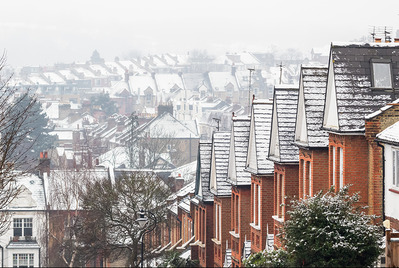
When your property is going to be empty for a while, whether it be a void period between tenancies or your tenant has gone on holiday, here are five important steps we'd recommend you take to protect your investment.
- Insurance: how long can the property be left empty?
Most landlord insurance policies have a clause about how long a property can be vacant before the coverage lapses - usually around 30 days. While a tenant's short holiday won’t be a problem, it’s still worth double-checking the specifics of your policy.
If you already know the property will be empty longer than the allowed time, get in touch with your insurer. They may offer options to extend coverage, so you’re not left unprotected.
We work with First2Protect, who can help you with standard landlord insurance or offer coverage for vacant properties. You can request a no obligation callback here to explore your options.
- Safety checks after your tenant leaves
Let’s be honest, we’ve all had that moment when we’re on holiday and suddenly panic about if we forgot to switch everything off at home, and your tenant might feel the same. A quick visit to the property while they’re away can give you both peace of mind that everything is in order.
Remember, as a landlord, you’ll need permission from the tenant to enter the property, and you must provide at least 24 hours’ written notice.
- What maintenance can be done?
Maintenance work can be a hassle for tenants while they are staying in your property, so taking care of maintenance work while the property is empty is a smart move. This is especially true for bigger jobs like roof repairs or redecorating, where an empty property means contractors can work without interruptions.
As soon as you know your tenant will be away or when they are near the end of their tenancy, schedule an inspection. Create a list of tasks that need attention and book the necessary contractors in advance.
If you’re a fully managed landlord, we can handle this process for you, making it one less thing to worry about.
- Security: making the property look lived-in
Vacant properties can unfortunately attract unwanted attention from burglars or squatters. Regular visits can make it look like the property is still being lived in.
Given the tenant approves, we suggest visiting your rental property every week or so. Move the curtains, pick up any post piling up, and do what you can to make it look occupied.
- Inspect the property after bad weather
Storms can be unpredictable and can do serious damage to homes, as we've seen already this year. While there are steps you can take to help protect your property from storm damage, damage isn’t always avoidable.
After any severe weather, it’s a good idea to check the property. That way you can tackle any maintenance issues before your tenant returns or before a new tenant moves in.
In the winter, empty properties are also at risk of frozen pipes, which can lead to expensive repairs if they crack or burst. Visiting the property to run hot water and turn on the heating occasionally can help prevent this.
If you have any question about any of the above your local branch will be happy to help. You can search for your local Your Move branch here.

Your Move E-Marketing Executive



